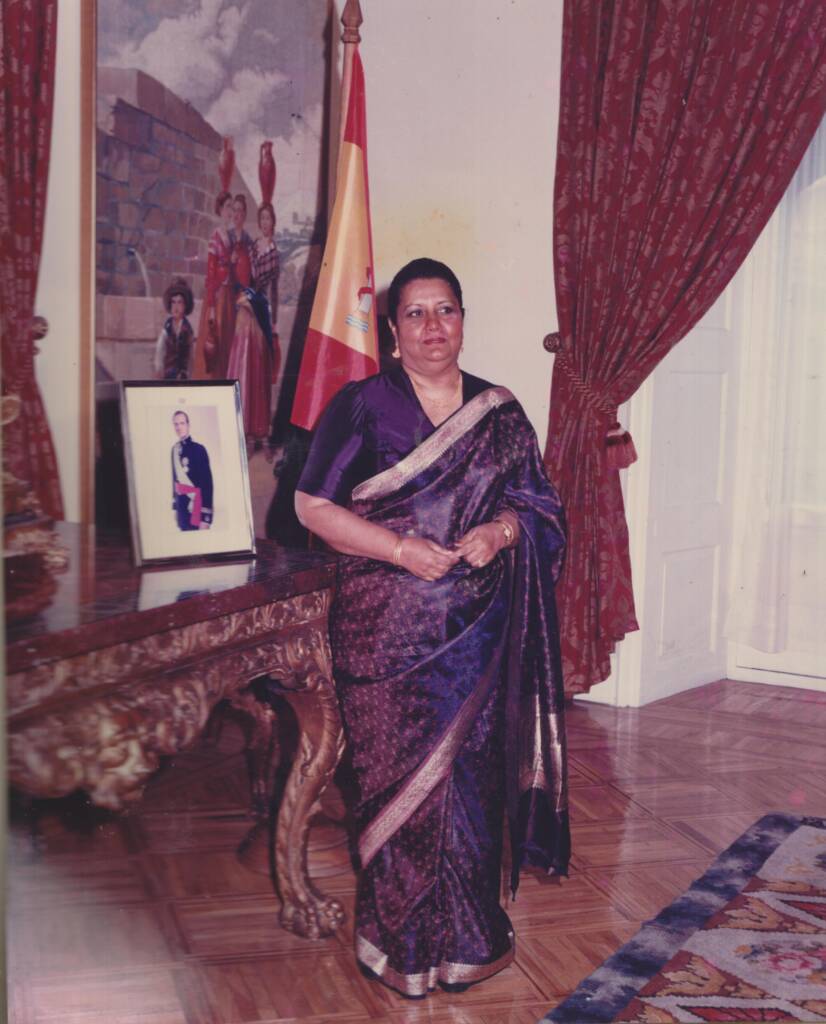
Read this article in Tamil: vidiyal.lk/post/–2806
By Uditha Devapriya
Sumitra Peries passed away last Thursday, 19 January. One of the last definitive auteurs of the Sri Lankan cinema, Sumitra was also one of the last few international figures from the island nation. Having begun her career as an assistant director and editor in the 1960s, she went on to direct 10 feature films. Her most recent work came out in 2018; she had planned a few more.
Sumitra’s films capture, in all their nuances and complexities, the torments of being a woman in Sri Lanka and, by extension, in South Asia. They dwell not merely on the rift between the rich and the poor, but also on the innocence of childhood and the torments of adolescent love. They centre on the woman’s place in what was, and still largely is, a patriarchal society.
Her first film, Gehenu Lamayi (Girls, 1978), establishes these themes remarkably well. At the centre of the story is a poor village girl, Kusum, who has ambitions for a better life. Midway through, she falls in love with an affluent classmate who happens to be her cousin. After a series of incidents that culminate with the discovery of their affair, Kusum’s situation begins to deteriorate. By the end of the film, her cousin has abandoned her and left the village. Contemplating a life of loveless poverty after having failed to pass her exams and secure a place in a local university, she sobs and stares at a mirror – where a large question mark symbolically stares back at her.
Though hailing from a traditional, rural upper middle-class, Sumitra came to identify strongly with such women. She was born Sumitra Gunawardena on 24 March 1935 in the village of Payagala and raised in the village of Avissawella, some 30 miles from the country’s capital Colombo. Her mother hailed from a family of affluent arrack distillers, and her father belonged to a household of radical political activists. Two of her paternal uncles became leading socialist politicians. One of them, Philip Gunawardena, went on to earn the epithet “Father of Socialism” in Sri Lanka.
All these shaped Sumitra’s political consciousness from an early age. After she turned 13, a month after Sri Lanka obtained independence from Britain, she was sent to study in Colombo. Two years later her mother passed away. Devastated by the loss, her elder brother Gamini, the sibling she admits as having been closest to her at that point, “left everything to us and then left the country.” A few years later he got in touch with her: he was in Europe, and he wanted her to join him. “I agreed at once. After scrounging up some money, I got aboard a P&O liner and set sail to the Mediterranean in 1956, on my own. My father had given me his blessings.” She was not quite 21.
Sumitra met her brother in Naples, Italy, from where they drove to Malta. Her brother had a yacht docked there, and was leading a bohemian life with some friends, among whom was Claude Graaf, a naval architect who had married Muffin Mayo, daughter of the owner of the Mayo Clinic in the US. Dropping anchor across the Mediterranean, she revelled in her new life, “from the people we met to the food we ate.” At Saint-Tropez, she came across Brigitte Bardot and Roger Vadim making And God Created Woman (1956). It was the first time she had seen a film being shot.
After a series of adventures and misadventures, Sumitra found herself alone in Lausanne and, later, in Paris, once her brother returned to Sri Lanka. At the Ceylon Legation in Paris – Sri Lanka had only just established a separate diplomatic office in France – she met her future husband, Lester James Peries (1919-2018), who had made Rekava (1956), which heralded a breakthrough in the Sri Lankan cinema around the same time Satyajit Ray’s Pather Panchali had in the Indian.
Lester advised Sumitra to leave for England. She did just that, enrolling at the London School of Film Technique (LSFT) in Brixton. There, she made friends with both her classmates – she was the sole female student in a class of mostly white, middle-class males – and her teachers. Among the latter was Lindsay Anderson, with whom she would remain friends until his death in 1994.
Sumitra excelled in her studies: she had found her calling. Yet finding a job was not easy. Only after knocking on the doors of Elizabeth Mai-Harris, a subtitling firm, did she find work; her fluency in French, she recalled, helped her make her case. After a while, though, she began to grow homesick. She thus returned to Sri Lanka, where she worked as an assistant director aboard a film directed by Lester James Peries, the man who had asked her to leave for England. Four years after the release of that film, Sandesaya (The Message, 1960), Sumitra would marry him.
Working her way up in the industry as an editor, including aboard many of her husband’s films, Sumitra made her directorial debut, Gehenu Lamayi, in 1978. Gehenu Lamayi became a resounding success, not just at home, but also abroad. It received a positive response from the British press in particular: David Robinson of The Times, for instance, lauded it for its “holistic feminine sensibility.” It was also screened, to very positive receptions, in London and Carthage, Tunisia.
Gehenu Lamayi’s success emboldened her to make nine more films, all but one centring on female protagonists: Ganga Addara (By the Bank of the River, 1980), Yahalu Yeheli (Friends, 1982), Maya (1984), Sagara Jalaya Madi Handuwa Oba Sanda (A Letter Written in the Sand, 1988), Loku Duwa (The Eldest Daughter, 1996), Duwata Mawaka Misa (Mother Alone, 1997), Sakman Maluwa (The Garden, 2003), Yahaluwo (Friends, 2007, the exception, which featured a young boy, a product of an interracial marriage), and Vaishnavee (The Goddess, 2018).
Sagara Jalaya Madi Handuwa Oba Sanda (sometimes shortened as Sagara Jalaya), is generally considered to be her best work. Based on a short story, the film delves into the torments of a village woman (played by one of Sri Lanka’s finest actresses, Swarna Mallawarachchi), whose husband, a rice cultivator, dies after falling off a tree. The whole story is told from the point of view of her son, who can’t understand why she becomes embittered towards everyone after his father’s death. The film ends with the boy writing an imaginary letter in the sand to his uncle, urging him to employ him at the uncle’s shop so that he can relieve his mother. In its harsh sun-baked setting and its gruelling depiction of village life in Sri Lanka, it remains, then as now, unsurpassed.
In addition to her work in film, Sumitra tried her hand in television, having studied the medium in the early 1970s in France, nearly a decade before its arrival in her home country. She also served in a number of official and academic posts, before departing for Paris as Ambassador Extraordinary and Plenipotentiary to France and Spain from 1995 to 1999. When her husband passed away in 2018, a series of legal wrangles compelled her to leave her home in Colombo to a nearby suburb. She was still meeting people, particularly young, aspiring directors, and still advising them, while considering story options for her next film, even this year. Her death, in that sense, signals not just the passing of an era, but more crucially its end: a fact Sri Lankans will only too sadly acknowledge.
Uditha Devapriya is the Chief Analyst – International Relations at Factum and can be reached at uditha@factum.lk.
Factum is an Asia Pacific-focused think tank on International Relations, Tech Cooperation and Strategic Communications accessible via www.factum.lk.
The views expressed here are the author’s own and do not necessarily reflect the organization’s.


